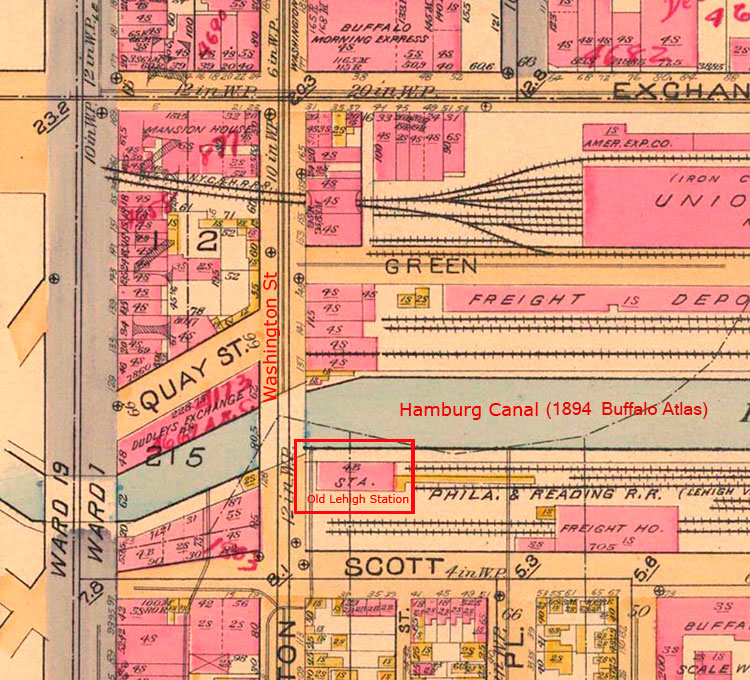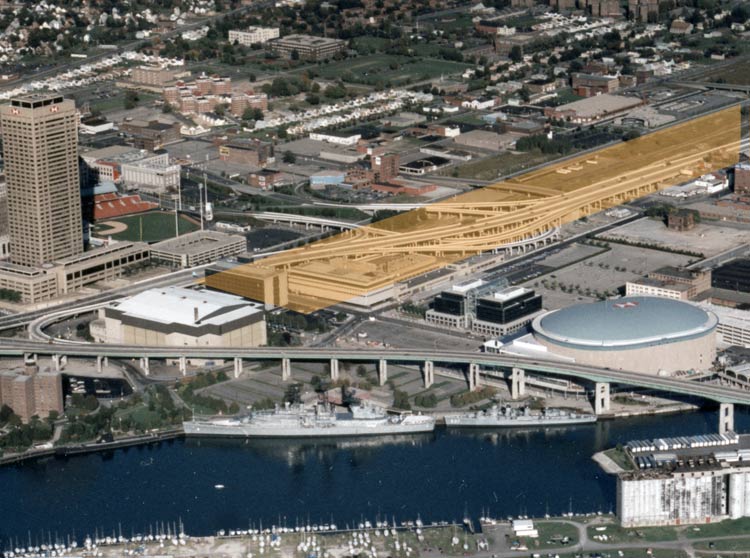Buffalo's Lehigh Valley Terminal: Canalside
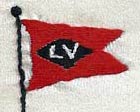 The Lehigh Valley Railroad began in Pennsylvania as a shipper of anthracite coal and became nicknamed the "Black Diamond" railroad. In 1882, the company purchased the Tifft farm, 742 acres of land, for their rail yard and coaling facility. At the same time, they began contstruction of freight and then passenger facilties in downtown Buffalo along Washington Street adjacent to the Hamburg Canal. View the old terminal facilities here. They were demolished for construction of their handsome new facility.
The Lehigh Valley Railroad began in Pennsylvania as a shipper of anthracite coal and became nicknamed the "Black Diamond" railroad. In 1882, the company purchased the Tifft farm, 742 acres of land, for their rail yard and coaling facility. At the same time, they began contstruction of freight and then passenger facilties in downtown Buffalo along Washington Street adjacent to the Hamburg Canal. View the old terminal facilities here. They were demolished for construction of their handsome new facility.
The City of Buffalo, served by numerous railroads at the end of the 19th century, attempted to persuade them to construct a 'union station' that would facilitate passenger transfers and improve the image of the city which had no attractive entry point in the form of a handsome railroad terminal. The city had taken possession of the noxious Hamburg Canal from the State and, in 1901, had filled it in, creating that quintessential Buffalo opportunity, a city-owned shovel-ready site. For a time, the railroads were agreeable to locating the union station there, but in the end the idea failed. The location was eventually sold to the Wabash Railroad for $901,000 in 1906. The Lehigh Valley Railroad purchased the site for its ambitious passenger and freight facilties.
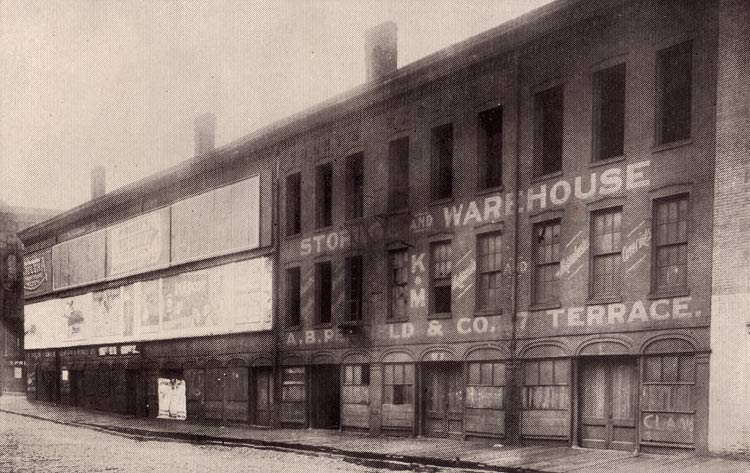
Dudley's Exchange, north side of the Hamburg Canal, south side of Quay Street.
In January, 1914, the Lehigh Valley Railroad began site preparation by demolishing structures on their property. The above structure was built in the 1840's and was regarded as the scene of many social events and political meetings during the Civil War. Additional demolitions included "four-story brick buildings formerly occupied by a general store and saloon, a large warehouse south of the canal at and extending some distance along Scott Street; another four-story brick building at Scott and Washington streets, formerly occupied as warehouses and machine shops; a four-story block on Washington, extending from Scott Street to the canal, recently used as machine shops; and the old-three story brick building at Quay and Washington streets known years ago as Dudley Exchange and in recent years devoted to warehousing and scrap metal business." (Buffalo Evening News, January 7, 1914.)
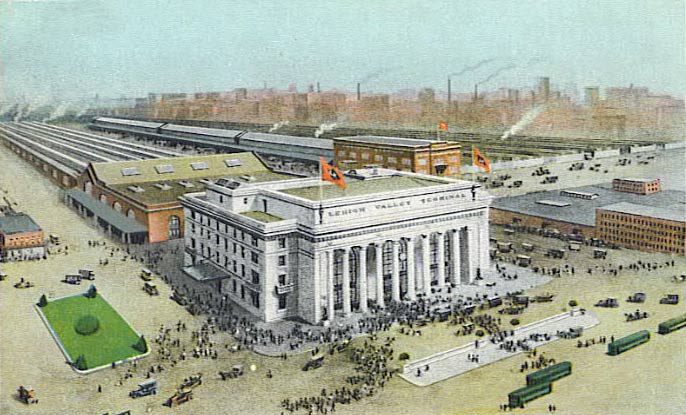
Artist's conception of the new Buffalo facilities, crowned by the gleaming passenger terminal facing Main Street. Image source: private collection.
Lehigh Valley spent $5 million dollars on the project, including acquiring the land, constructing a new passenger terminal, new freight house and yard and a new 4-track main line approach. The architect for the terminal was Kenneth M. Murchison (New York); the contractor was J. Henry Miller (Baltimore).
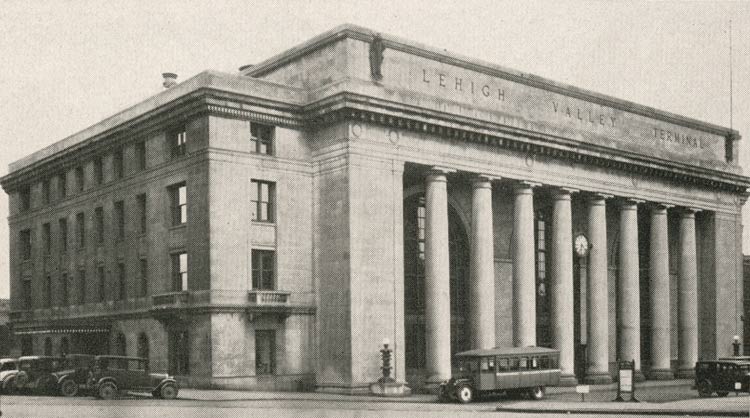
1934 photo. Image source: private collection
The freight facilities opened in December, 1915. The passenger terminal opened August 29, 1916. It was a 4-story structure of gray Indiana limestone, with a granite base and terra cotta trimmings.

Floorplan of the first floor of the separated terminal building and concourse/headhouse. Image source: private collection.
The Lehigh Valley Railroad encountered a problem siting their terminal and headhouse; the city of Buffalo refused to close Washington Street to allow for a continuous terminal. It was therefore necessary to construct a tunnel, or subway, beneath Washington Street to permit passengers to pass between the two buildings without having to exit each building. This was effected by making the passageway into a ramp. The tunnel was 18 feet wide and 8 feet tall.

The waiting room. Image source: private collection.
The waiting room was 82' by 102.' The floor and wainscoating were marble. In addition to the natural light of the windows on the columned front entrance, light was also provided by chandeliers and lights affixed to the benches.
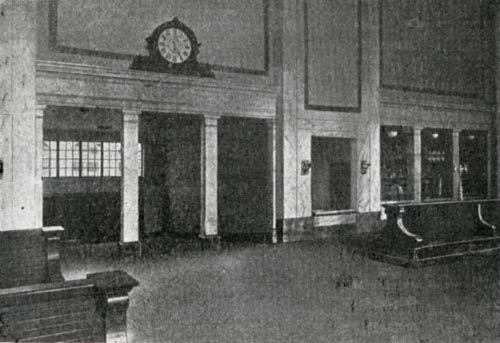
Waiting room view of the entrance to the tunnel to the concourse/headhouse. Image source: private collection.
The terminal featured a ticket office, telephone and telegraph facilities, a smoking room, woman's room, restaurant, and invalids' room. The entrance facing Main Street allowed for automobile access and provided a protected platform for passengers waiting for streetcars. The Quay Street side had a marquis for a covered entrance.
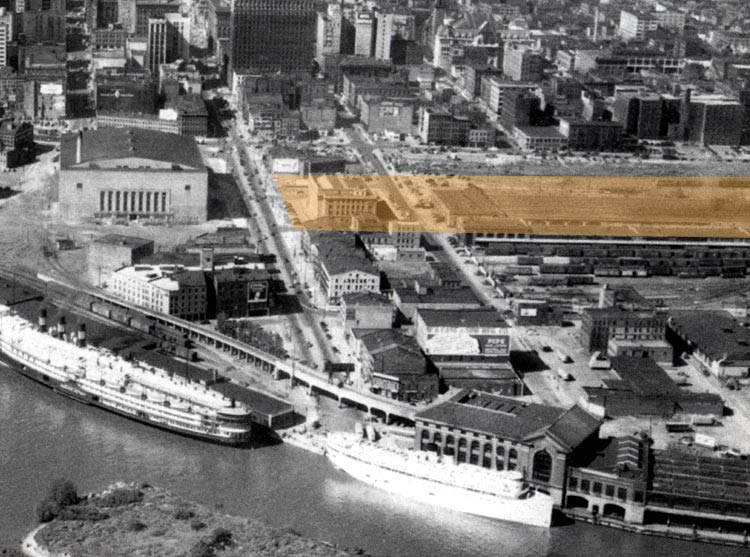
Lower Main Street, 1946. Image source: TBHM Fitzgerald Collection.
The orange shaded area above was occupied by the Lehigh Valley terminal and railyards. Their freight facilities continued along Washington Street. Memorial Auditorium is at the upper left.
The Lehigh Valley Railroad prospered until after World War II when, like all railroads, it began to suffer the effects of the shift to automobiles and airplanes as primary methods of transportation. The Lehigh opened a new terminal at Dingens Street and South Ogden in 1955, abandoning its great terminal in downtown Buffalo. The downtown terminal was demolished in 1960 to make way for the Donovan State Office building. In 1961, the Lehigh Valley Railroad ended passenger service entirely, limping along with its freight component until 1975 when it was absorbed by Conrail. The new terminal was demolished in 2004.
A similar perspective from recent years. The shaded area was formerly the Lehigh Valley site. The Donovan Building (1962) and The Buffalo News Building (1971-1973) occupy part of the site. Like other railroad rights of way in Buffalo and elsewhere, the Lehigh's became part of the superhighway infrastructure. The NYS Thruway Authority constructed its I-190 line and interchanges on the site.
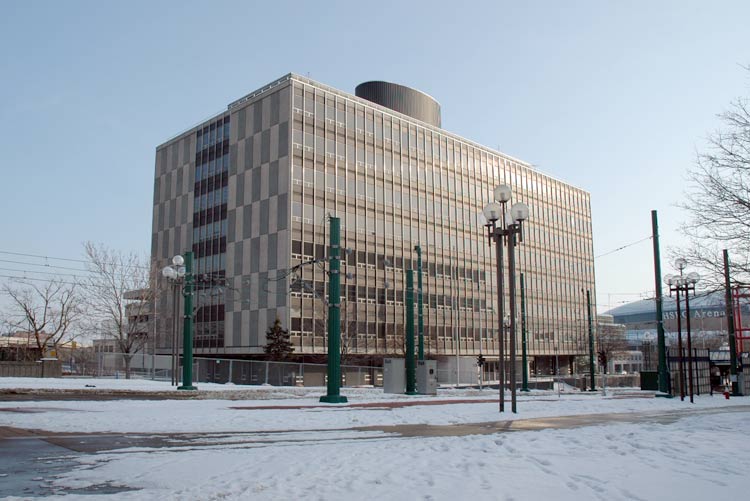
Last days of the Donovan State Office building, 2008.
And, in 2008, for the 4th time in the history of this site, demolition and reconstruction were scheduled to occur. In December, 2007, the Erie Canal Harbor Development Corporation took control of the then-vacant 146,000 square foot Donovan State Office building. It had been completely vacated by the second week in January, 2007, as part of the planned Bass Pro development. The site was planned for a parking garage.

2012 former Donovan building stripped to its concrete skeleton; reconstruction underway.
The structure's fortunes changed in March 2010 when Benderson Development and Ciminelli Construction announced talks with the law firm Phillips Lytle regarding possible tenancy in the former Donovan building. In August 2012, the ECIDA granted $900,000 in sales tax breaks to the "extreme makeover" project, excluding the law firm. A Courtyard Marriott would occupy a major portion of the rest of the building, with 93 rooms, a pool and fitness center. Other retail space would be available.
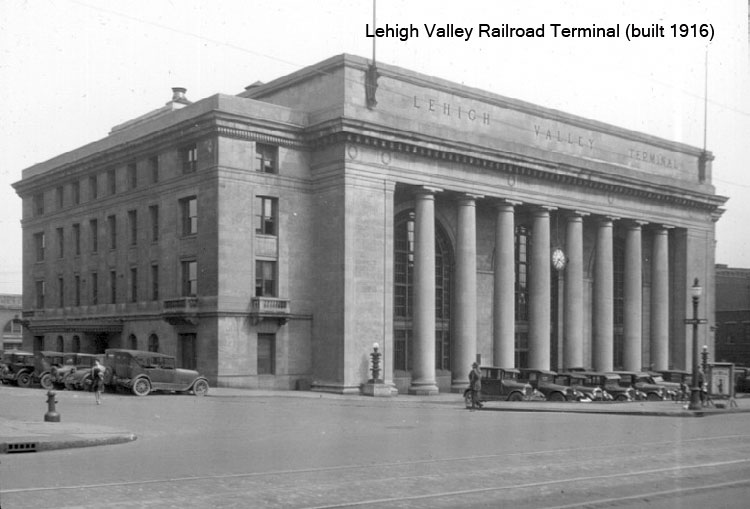

Pull the arrow tab left or right to view a comparison of the 1930s and 2014 views.
